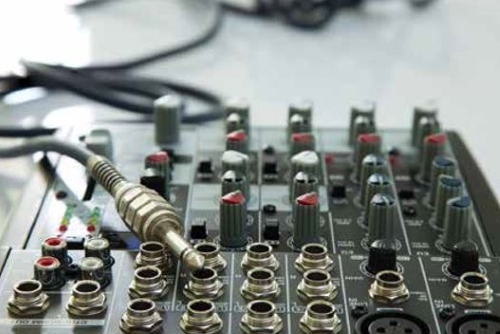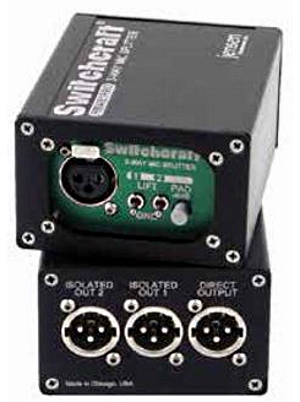
Sends Everywhere
Let’s move on to the output side. Some events, again including corporate events, demand audio in many locations, including main, fill and delay loudspeakers as well as ties into the lobby and other pre-function spaces, sends to overflow rooms, feeds to video world, teleprompters, backstage areas, dressing rooms and even a send to the intercoms.
The rental loudspeakers had AES inputs, so I borrowed some 3-pin DMX cable from the lighting folks (because AES requires 110-ohm cable) and ran the mains off the AES outputs. That freed up two of the assignable XLR outputs, giving me a spare for the show.
Most of the newer digital consoles offer up a slew of onboard and remote network or stage box outputs that can be assigned as needed, but smaller digital and analog consoles can run out of outputs quickly. Here’s another area where utility mixers come in handy, for the reasons noted earlier. Recently while freelancing a smaller event, one more output was needed, and I was just about to break out the utility mixer when I noticed the main desk sported an AES stereo output.

Other places to find “extra” outputs on consoles include the subgroup outs, matrix outs, mono out and the control room out. Just make sure you don’t solo anything when using the control room outputs on any console because only the soloed item will then appear on that feed.
I’ve also used channel direct outputs in a pinch. These work well when video world wants a feed of just the podium or presenter’s main wireless. And if you’re using an outboard hardware processor or EQ, many offer both TRS and XLR connectors that are wired in parallel. While not ideal, both output connectors on an EQ can be employed to get another send.
Cut The Footprint
Another way to reduce the amount of inputs is to reorganize and consolidate. For example, at a meeting, unplug the backup podium mic and clearly label the cable end and keep it next to the console, ready to go in case of emergency.
Same goes for the spare wireless system. Just be sure to label the ends of the cable clearly so you can grab it quickly and plug it in if/when needed.
Drums are a big aspect to take a look at. Are the overheads really required in a small room or can the cymbals be heard clearly in the audience listening area? Maybe only a single overhead or ride cymbal mic is required. Further, does the snare really need two mics? A bottom mic indeed does increase the “snap” and provide tonal options, but is it required?
Same with a second kick drum mic. I prefer using a two-element mic on kick, and many folks swear by a second large-diaphragm mic outside the drum to get more tone from the resonant head and body, but you can live without it for one gig. A single large-diaphragm dynamic can capture a great sound from most kick drums.
Early in my career nobody owned a console large enough to provide each tom with a separate mic channel. Placing a mic between the two rack toms was the norm for years and in an emergency, it works fine. In fact, I occasionally still use one mic on two toms, especially in smaller rooms where the drums don’t need a lot of amplification.

Another way to consolidate drum mic channels is to area-mike the kit with just a few well-placed mics, as is done frequently in the studio world. These techniques work particularly well with jazz or world music, especially in smaller rooms or if it’s a quieter show. A three-mic setup might have one mic placed on the kick as usual, another positioned by the hi-hat but pointed so it also picks up some snare drum, and the third mic as an overhead to get the entire kit.
An alternative for a jazzy drummer who uses brushes might be to move the hi-hat mic closer to the snare or position it overhead to pick up more snare. These techniques also work well for percussion setups, i.e., using a single mic to capture two or more hand drums like congas or bongos.
Further Steps
There are additional ways to pare down an input list. Bass guitar DI and a mic on the amplifier? Choose one.
Keyboards can be dropped from stereo to mono, and a large keyboard setup can be sub-mixed with a utility mixer down to a minimum of channels.
Vocals can also be consolidated with backup singers sharing a mic, preferably one with a cardioid pattern. Some musicians may only play a second instrument like an acoustic guitar or mandolin for one song per gig. It may be possible to use the same channel for both instruments and take a snapshot of the settings so they can be recalled when the switch is made to the second instrument.
In addition, combiner boxes can be used to route two mics to the same input channel of a console. These boxes work well for mics on the same instrument like a piano, drum toms, and mallet instruments like xylophones or marimbas where there’s need to “share” the channel EQ.
The next time a surprise jumps into your lap at a gig, keep these ideas in mind. Many shows can be squeezed into a smaller footprint, and if done judiciously and correctly, clients and audiences are none the wiser.
